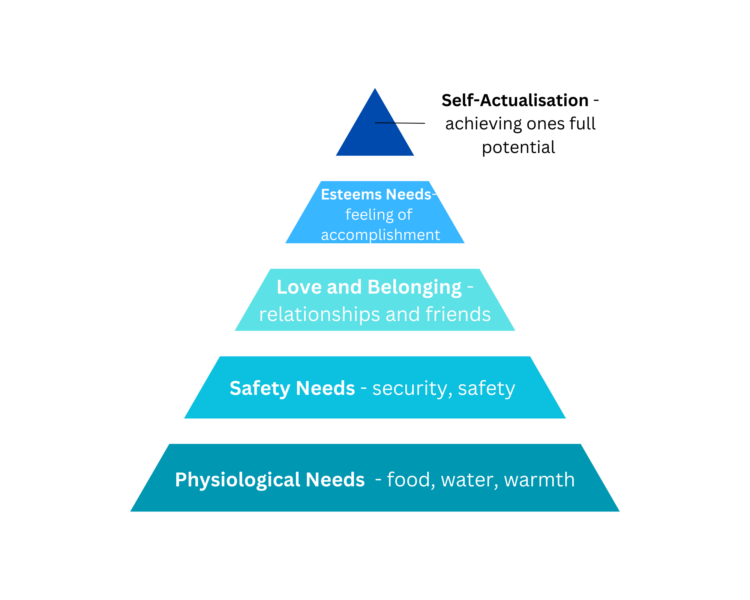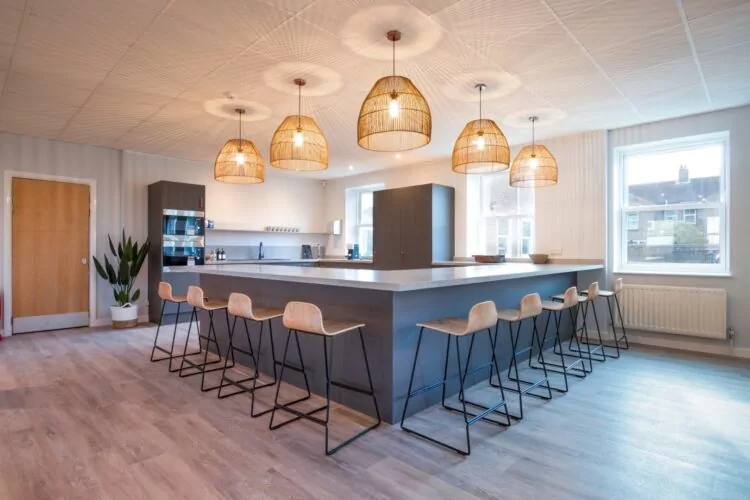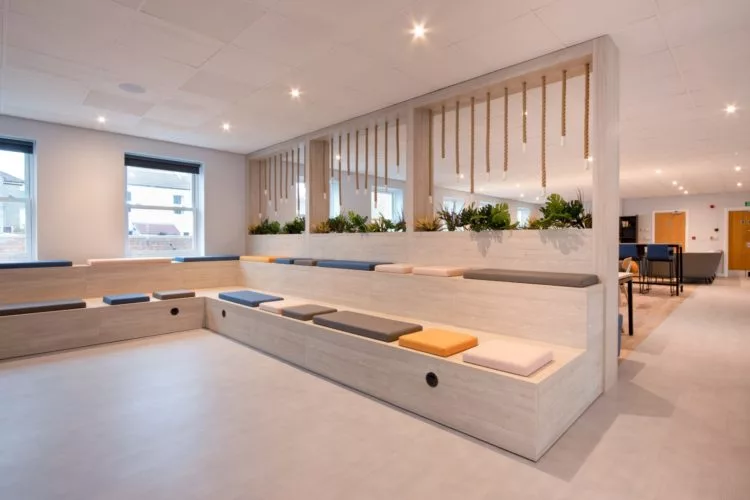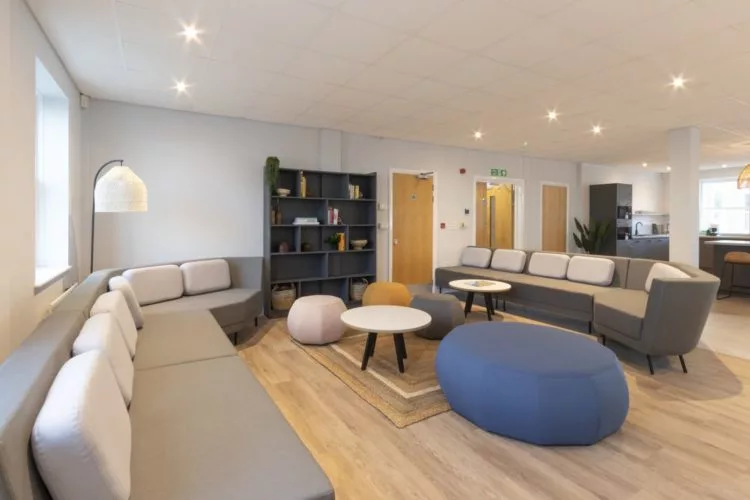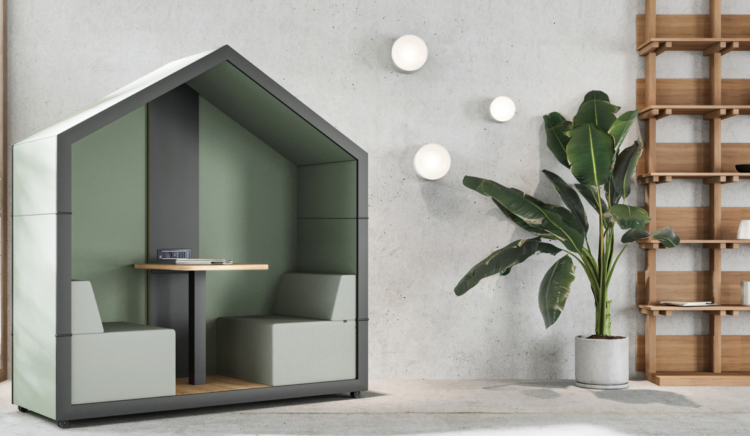 Add My Company
Add My Company
Has Your Office Had a Health Check Recently?

One day, we’ll be telling our grandkids about the time the UK workforce was gripped by cabin fever. Due to the pandemic, we were confined to makeshift home offices and driven slowly mad by glitching video calls and fawning pets.
Thankfully, we’re no longer pulling our hair out (the hairdressers have since re-opened), but what has become of our wellbeing post-lockdown? Have businesses kept wellbeing high on their priority list? Let’s find out …
Data on Workplace Wellbeing – 2023
Every year, wellbeing strategists Champion Wealth create a workplace health report, which highlights anonymous employee wellbeing statistics generated over the previous 12 months. Despite lockdown measures being lifted some time ago, the 2023 report shows that employees are still struggling when it comes to wellbeing.
Among those surveyed, 76% said they experience moderate to high levels of stress (an increase of 13% vs 2022), while 56% experience depression. Regarding physical health, 41% of employees are currently experiencing MSK (musculoskeletal) pain, which negatively impacts productivity for 17%.
It’s also necessary to highlight that some of the data relates to external pressures, such as the cost-of-living. With energy costs soaring, financial wellbeing is affecting 37% of individuals.
Such data suggests that we’ve gone from a viral pandemic to a wellbeing pandemic. But with no vaccination for wellbeing, what can we do about it?
Running a Health Check – Where to Start
External crises aside, there are plenty of ways businesses can address wellbeing issues in the workplace. If you’re looking to run a “health check”, consider using Maslow’s Hierarchy of Needs as a reference point.
Maslow’s theory comprises a five-tier model of human needs, often depicted as a pyramid. From the bottom of the hierarchy upwards, the needs include physiological (fundamentals like food and clothing), safety (health and wellbeing), love and belonging (relationships), esteem and self-actualisation (creative and intellectual achievements).
By using Maslow’s theory, you can give your wellbeing strategy some focus. Here are a few ideas to get the ball rolling …
Physiological Needs
Physiological needs are biological requirements for survival, such as air, food, shelter and sleep. While you’re likely covering the basic needs (e.g. by providing an office space for shelter), consider what you could do to go above and beyond. Here are some useful tips:
- Improve Air Quality – These days, you can buy indoor air quality software that measures levels of humidity, dust, CO2 emissions, temperature and more. Combined with a purifier that can trap and eradicate harmful substances, employees will be breathing easily throughout the day.
- Help Employees to Stay Awake – Sleep deprivation can affect both wellbeing and workplace performance, so it’s important to help employees get the rest they need. Studies prove that physical activity can help with sleep, so encourage exercise by introducing bike storage, creating activity zones, and offering gym memberships.
- Prevent Hunger Pangs – Employees aren’t themselves when they’re hungry, so try and make the dining space as inviting as possible to encourage lunch breaks. In addition to food storage, offer a breakfast bar or breakout area to lure them away from their desks.
While these are considered basic fundamentals, stopping here would mean missing other important needs that contribute to good overall wellbeing. So, let’s look at the next step on the pyramid …
For more breakout area ideas for your office, read our blog: 20 Breakout Area Ideas for Your Office
Safety Needs
Is your office as safe as it could be for employees? While some safety breaches are obvious, others can be less apparent. Here are a few key areas to investigate:
- Furniture for Improved Physical Health – With over 40% of employees experiencing MSK pain, make sure you ask your team members if they require ergonomic furniture. Sit-stand desks, for example, can alleviate pain in the lower back, upper back and neck, making them a smart addition to the workplace.
- Safety Measures to Avoid Accidents and Injury – Listing all the safety breaches is beyond the scope of this blog, but we still encourage you to scan the office for blatant hazards. Do you see any damaged or trailing electrical cables? Is the main escape route obstructed by someone’s Amazon delivery? You might be surprised at what you find!
- Freedom from Fear and Discrimination – Is the office a positive environment that embraces inclusivity? A workplace that does so will have elements like access ramps, height adjustable desks, and ambulant washrooms.
Many safety requirements should have been ticked off the list by your fit out company, but it’s worth checking over your workplace regularly to avoid casualties.
Love and Belonging

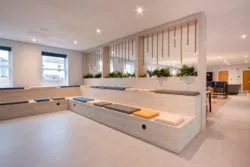

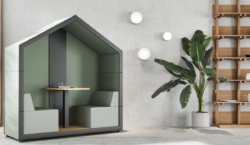
Belongingness refers to a human emotional need for relationships and being part of a group. For this reason, businesses should do all they can to foster a friendly, team-centric environment. But how?
Like in school, office relationships happen organically, but the design of the space can help people to interact too. For example, a lounge area can encourage employees from different departments to mingle. The same can be said for bleacher seating for team building days.
If you’re operating with a hybrid working model, make sure you have suitable tech to connect home and office workers. Home working can negate the sense of belonging, so Zoom booths and meeting spaces with digital booking systems are a must.
Esteem
Esteem needs include self-worth, accomplishment and respect. Maslow classified esteem needs into two categories: the first being personal esteem, and the second being the desire for acceptance and respect from others.
For personal esteem, consider if you are doing enough to help employees be the best version of themselves. One forward-thinking way to do so is adapting the office for neurodiversity, as this will set up the space so all employees can work efficiently (which, in turn, will help to combat stress). Such adaptations could be quiet rooms for deep work tasks or low traffic areas to reduce social anxiety.
To help employees build a reputation and feel respected, the aforementioned bleacher seating is great for employee-of-the-month announcements.
Self-Actualisation
Self-actualisation needs refer to a person’s ambitions for personal growth, achievements and experiences. In workplace terms, this is intrinsically linked with the points made in the esteem section.
Indeed, businesses should do all they can to help employees to achieve their career goals and reach their full potential. Start by asking employees what their goals are, as this will start a conversation about how you can help them achieve self-actualisation.
This could mean investing in technology or training to build on their existing skills. Perhaps the initiative could also involve a bonus scheme to help pay for a life changing trip to an exotic destination!
Thank You for Reading
Given the eye-opening statistics on workplace wellbeing, it seems that businesses have still got work to do to help employees feel safe, happy and fulfilled. That said, since the pandemic, we’ve seen many businesses embracing a human-centric approach, so there is reason to be optimistic about the future of workplace wellbeing. For those looking to the future, Maslow’s theory can serve as solid foundation for a successful wellbeing strategy.
Is Your Company Due a Health Check?
If you’re considering an office refurbishment to improve employee wellbeing, then Rap Interiors would love to help. With over 30 years’ workplace design and build experience, we can guide you on the best solutions so employees have everything they need to flourish.
For more information on Has Your Office Had a Health Check Recently? talk to Rap Interiors


